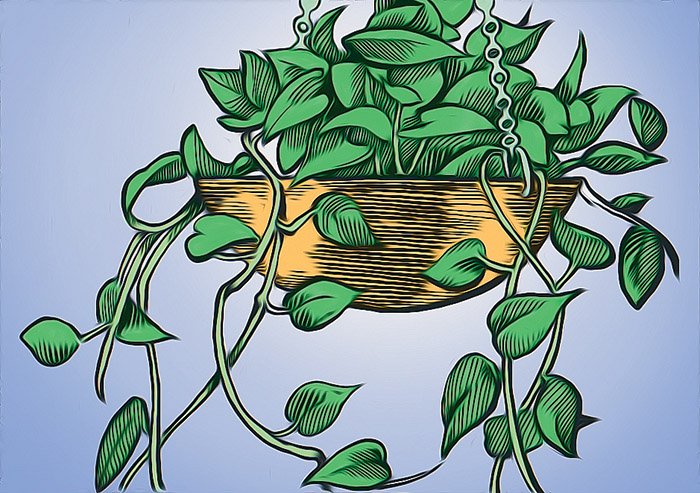With spring nearing, I’m interested in some new garden or design trends for 2017 that I could incorporate into the property surrounding my house as well as inside of it. What would you recommend?
“One of the biggest trends in gardening is bringing the outdoors in,” says P. Allen Smith, author, television host and conservationist.
“Many houseplants do double duty by helping clean the air and beautifying your space,” Smith says.
“Climbing plants are particularly popular right now. They’re easy to grow and add whimsy to a home or office. Plant them in a hanging pot or train the vines to climb around windows, door frames and along bookshelves or other furniture,” says the gardening expert who uses his home, Moss Mountain Farm (PAllenSmith.com/tours), to promote organic gardening, the local food movement, and the preservation of heritage poultry breeds. “Just be sure to not overwater your climbers and water only when the soil is completely dry.”
If the climbers need to be transplanted, he advises increasing the container by two sizes and repotting in the spring, and occasionally pruning the vines so they don’t get out of control.
“In your kitchen, try an herb garden,” says Smith, whose PBS show Garden Home airs on AETN and Create TV; his Garden Style show is in syndication. He says mint, rosemary, parsley, bay leaf, thyme, chives, scented geranium and oregano all grow well indoors. Basil, however, is not ideal for an indoor herb garden because it loves sunlight and heat.
“A windowsill with southern exposure is often all you need to grow herbs indoors,” Smith says, adding that most herbs require at least six hours of direct sunlight; barring that, a grow light can aid in their growth.
“The exceptions to this rule are mint, parsley and rosemary, which can take a little less light,” he says, adding it’s a good idea to place the herbs that prefer more sun in the center of the windowsill and those that need less light on the outside edges.
“If you use a grow light, be sure the lights are about 6 to 9 inches above the tops of the plants,” he says.
Outside, Smith prefers to mix herbs, flowers and vegetables in one space. He says flowers aren’t essential in a vegetable garden, but he believes they make it better.
“From a practical standpoint, flowers work to attract pollinators and add the unexpected to your garden’s design,” he says. “Consider incorporating edible flowers like nasturtiums, day lilies and marigolds. Instead of planting in rows, I like to create “garden rooms” by combining ornamentals and edibles, which will also help maximize your available space.”
He suggests those wishing to successfully mix vegetables and flowers choose plants with the same growing requirements.
“Typically, vegetables require at least six hours of sun each day,” Smith says. There are some exceptions such as lettuce, parsley and spinach that will tolerate light shade. He adds that vegetables also need well-drained soil and consistent moisture.
There is a huge selection of blooming plants that like full sun as well and benefit from a similar watering routine as their edible companions, but he recommends always checking the plant tags to make sure they’re compatible.
“This spring at the farm, I’m grouping plants in containers and in the beds in a new way,” Smith says. “I call it the ‘triangle effect,’ incorporating a showy shrub, perennial and annual in the same space.”
This, he explains, allows him to replicate the layering effect found in nature with the taller shrub acting as a backdrop, the perennial filling in the middle and the annual shining in the foreground.
One example of this design is Proven Winners’ Limelight hydrangea (shrub), Cheyenne Sky ornamental grass (perennial) and Luscious Berry Blend lantana (annual).
“As always, make sure that what you plant together has the same growing requirements.”
For those areas where even grass doesn’t grow, Smith suggests adding moss as ground cover, which he says is becoming increasingly popular.
“Moss does not have a root system — its leaves and stems absorb nutrients and water directly,” he says. “Because it can grow in rocky and shaded areas, it’s great for ‘greening’ those areas of your property where nothing else will grow,” he says.
